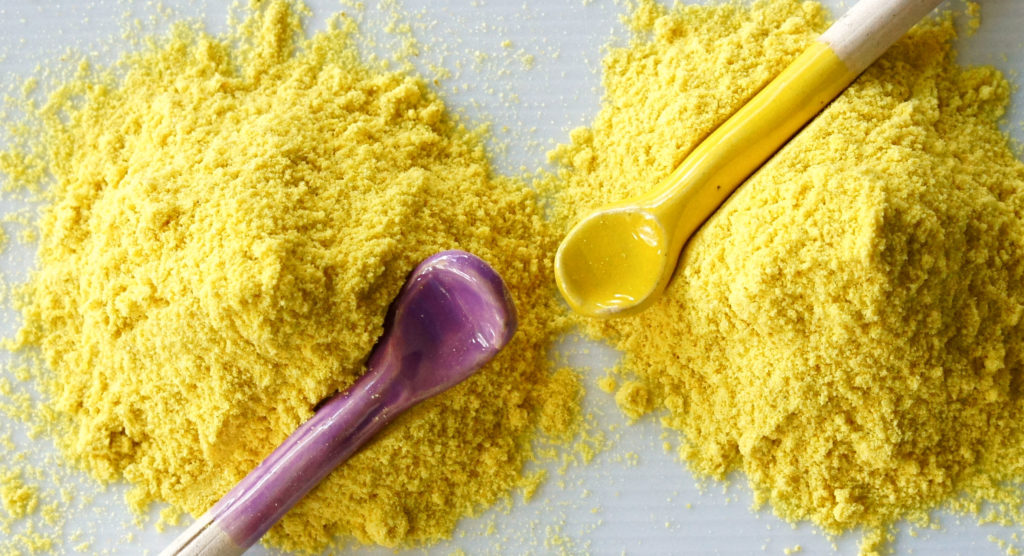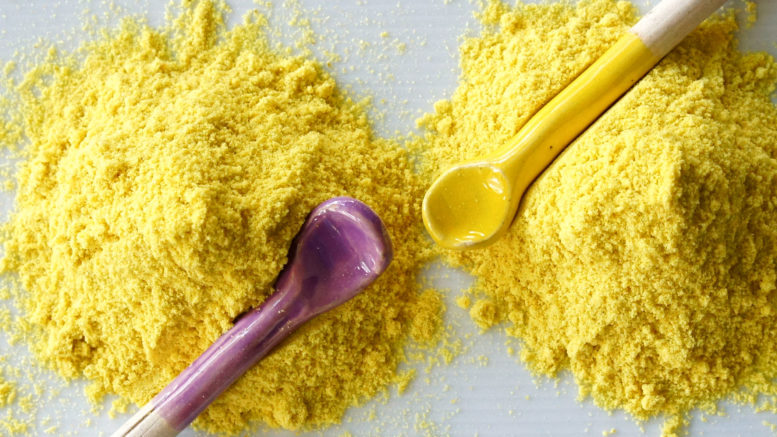
Pronounce it: Ass-a-feh-te-dah/Ass-a-feh-tee-dah
This is a gum from a variety of giant fennel, which naturally has a horrid and offensive smell, rather like rotting garlic, as in foetid. Yet it is considered the most blessed of flavourings amongst Jain and Brahmin Indians, who eat neither garlic nor onions, for it adds a very similar savouriness.
Asafoetida is also a Godsend to the many millions of others who won’t eat or can’t properly digest raw or undercooked onion or who don’t like garlic, either to eat or subsequently smell on their breath.
Availability
Easily available online, from bigger supermarkets and from Indian spice stockists, where it is known as hing.
Choose the best
Asafoetida comes in two main forms.
As a brown powder it is the full-strength dried gum that has been ground; it is highly odorous and must be used in very, very small amounts.
It is easier and better to source and use it as a yellow powder, when it has been diluted with flour or rice flour and turmeric, but it must still be used scantily. Different producers temper it different ways, so check the packaging for directions – but see below for guidance.
The real thing is red-brown lumps of different sizes but you are unlikely to encounter it.
Store it
Once a container of asafoetida has been opened it’s best to close it as soon as possible. Then, keep it hermetically sealed in an airtight plastic container, or double wrapped – at least. If the aroma escapes you will awake to find a house reeking of yesterday’s garlic.
Asafoetida’s degree of pungency is directly proportionate to its freshness, as its volatile oil escapes easily and the essence then fades. Take great note of the storage advice and replace it often if you use it regularly.
Cook it
Generally, the yellow, diluted asafoetida powder is used in about the proportion of a pinch or two to 250g of the main ingredient. The real thing is used in smaller amounts. You will quickly discover if you like more or less and there is no harm done if you use too much; longer cooking mellows it. But do use enough to allow it to be recognised and to contribute subtly to the cooked dish.
Asafoetida works best when first fried for five to ten seconds in hot oil until its pungency is dramatically obvious- make sure you have the extractor on or the window open. Then quickly add other ingredients to stop it burning.
Even such small amounts of asafoetida give a comforting onion-garlic flavour, which is specially good in vegetarian dishes of all kinds as well as in meat curries and stews – almost anywhere you would use onion and/or garlic but don’t wish to do so.
Tiny amounts give a gentle lift to fish, egg or cheese dishes where onion would be too coarse or bulky; yes even in a Welsh Rarebit. It’s ideal for use when you are not certain if others like onions and garlic or when you do not want subsequently to have garlic breath or the wind problems that onion might generate. That includes in salads and salad dressings, too.
In fact, asafoetida is also a great natural defeater of intestinal wind, and that alone recommends it for inclusion in any and everything that includes lentils or beans.
What’s not to like?
Pioneering BBC-TV Chef Glynn Christian is author of REAL FLAVOURS – the Handbook of Gourmet and Deli Ingredients, voted ‘World’s Best Food Guide’.

Be the first to comment on "Asafoetida"